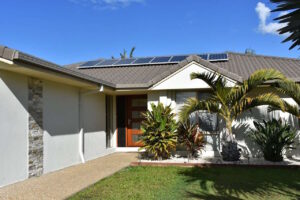 Tasmania’s bid to become the battery of the nation, providing the NEM with as much as 2.5GW of pumped hydro energy storage capacity, could require as many as four new interconnectors to be installed between the island state and mainland Australia, a report has revealed.
Tasmania’s bid to become the battery of the nation, providing the NEM with as much as 2.5GW of pumped hydro energy storage capacity, could require as many as four new interconnectors to be installed between the island state and mainland Australia, a report has revealed.
HydroTasmania yesterday announced that feasibility studies backed by ARENA had uncovered the potential for Tasmania to provide just under 5GW of storage capacity from just 14 of its best pumped hydro sites.
The solution was also heralded as being “cost competitive against all other realistic options” for the future NEM, with ARENA estimating total capital cost of $1.1 – $2.34 million per MW to develop around 2500MW of Tasmania’s most optimal pumped hydro sites – most of them coming in under $1.5 million per MW to build.
But how to get all that stored renewable energy – boosted by a ramping up of Tasmania’s wind power generation capacity – to the mainland?
HydroTas and ARENA have both acknowledged that “fully unlocking” Tasmania’s pumped hydro potential would need additional interconnection with the rest of Australia, beyond the existing Basslink cable – which itself returned to service this week after a 10-week outage.
Plans for a second interconnector are already being considered, via an ARENA and Tasmania government-backed business case study announced late last year – and at the time billed “a critical milestone for Battery of the Nation.”
But a closer look at HydroTasmania’s indepth report, Battery of the Nation: Analysis of the future National Electricity Market, suggests that up to four new interconnection cables could be necessary between Tassie and the mainland, depending on the amount of new pumped hydro and wind power capacity being added to the mix.
As the chart above illustrates, the largest scenario explored – which meets just 20 per cent of total projected demand for dispatchable capacity on the NEM through to 2040 – no less than five interconnectors would be needed.
For the 2.5GW of pumped hydro scenario that was flagged yesterday as the ideal, a total of four interconnectors would have to be installed by the early 2030s.
 On cost, however, the report says that the two major contributors in the Battery of Nation project would be the variable gas costs (fuel) and the wind energy.
On cost, however, the report says that the two major contributors in the Battery of Nation project would be the variable gas costs (fuel) and the wind energy.
“This analysis shows the transmission and interconnection costs are only a minor contributor to the overall investment required.” the report says.
As we reported here, a 2016 report into the feasibility of adding a second undersea link suggested it would not be worth the $1 billion investment unless at least 1,000MW of new renewable energy capacity was built in Tasmania.
And not everyone is convinced that a second cable is the way to go, when the installation of grid-scale battery storage alongside renewable energy generators – and harnessing the collective resource of behind the meter battery storage in homes and businesses – could offer a cheaper and easier fix to problems of balancing variable wind and solar recources.
In one scenario, drawn up by the Australian Energy Market Operator, AEMO found that the benefits of installing a second Bass Strait interconnector might outweigh costs over a 20 year period by just $20 million, and that those benefits might be eroded if battery storage costs continued to fall.
Earlier this year, Infrastructure Australia put the cost of a second basslink cable at about $1 billion to build.











